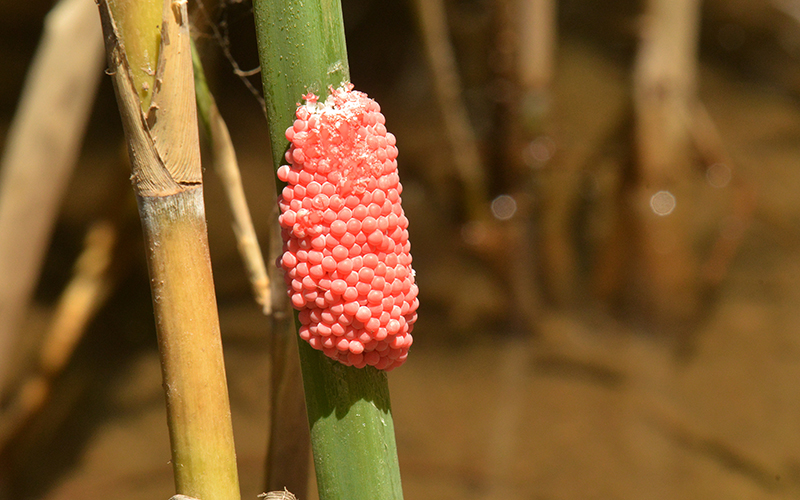
One female applensnail can produce up to 15,000 offspring per year, according to the Arizona Game & Fish Department. The invasive species can carry the rat lungworm, which can cause meningitis in humans. (Photo courtesy of the Arizona Game & Fish Department)
PHOENIX – Applesnails are a common aquarium pet, but they’ve also become a nuisance in some of the state’s waterways.
The Arizona Game & Fish Department wants to eradicate them from the lower Salt River, and it has enlisted the public’s help to clear the South American invaders from certain areas.
Erin Raney, the department’s aquatic invasive-species coordinator, said applesnails threaten Arizona rivers and lakes. The snails, whose shells can reach 6 inches across, also have been found in the Colorado River near Yuma, according to the Game & Fish Department.
“They take up space and food,” she said. “And these particular snails, they eat a lot of vegetation. They’ll even eat small native snails and eggs.”
The applesnail was likely introduced into the U.S. through the aquarium trade, according to the U.S. Geological Survey. The department said the snails can have negative impacts to wetland and aquatic ecosystems, agricultural crops and human health.
The snails can carry the rat lungworm nematode, which can cause meningitis in humans.
The applesnails will eat anything, but most species won’t eat them.
“The native wildlife that typically eat snails don’t like to eat applesnails because they don’t taste good,” Raney said.
That means they don’t have many predators, and they reproduce rapidly. One female can produce up to 15,000 offspring per year, according to the Arizona Game & Fish Department.
The department hosts snail removals in partnership with the boater safety education program, which provides boats and kayaks, as well as the Tonto National Forest.
Workers and volunteers survey the snail population along the river, and another group comes behind them to knock down egg masses or remove juvenile and adult snails, Raney said.
Earlier this summer, the group conducted a snail-removal event that identified 3,428 egg masses and removed 717 applesnails from a section of the lower Salt River.
Raney said volunteers can join as long as they’ve taken a paddle-sports education course to get comfortable maneuvering kayaks.
“It takes a lot of people just because they do lay their eggs so often and so quickly that it always helps to have volunteers,” she said.
Raney said they will conduct a snail removal on Friday and another on Aug. 17. For more information, check the department’s site.
This story is part of Elemental: Covering Sustainability, a new multimedia collaboration between Cronkite News, Arizona PBS, KJZZ, KPCC, Rocky Mountain PBS and PBS SoCal.
Have a story idea? Email us at [email protected].